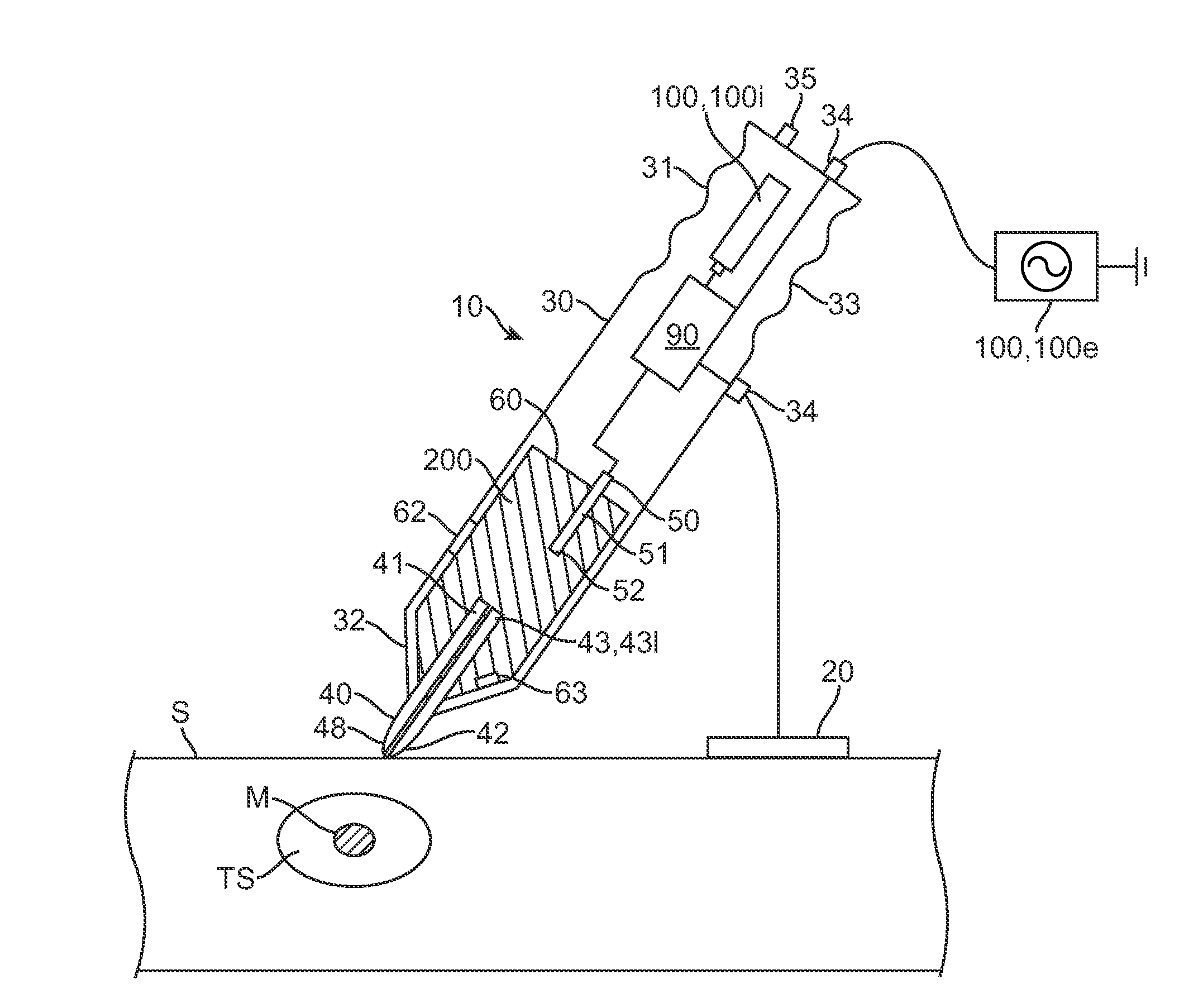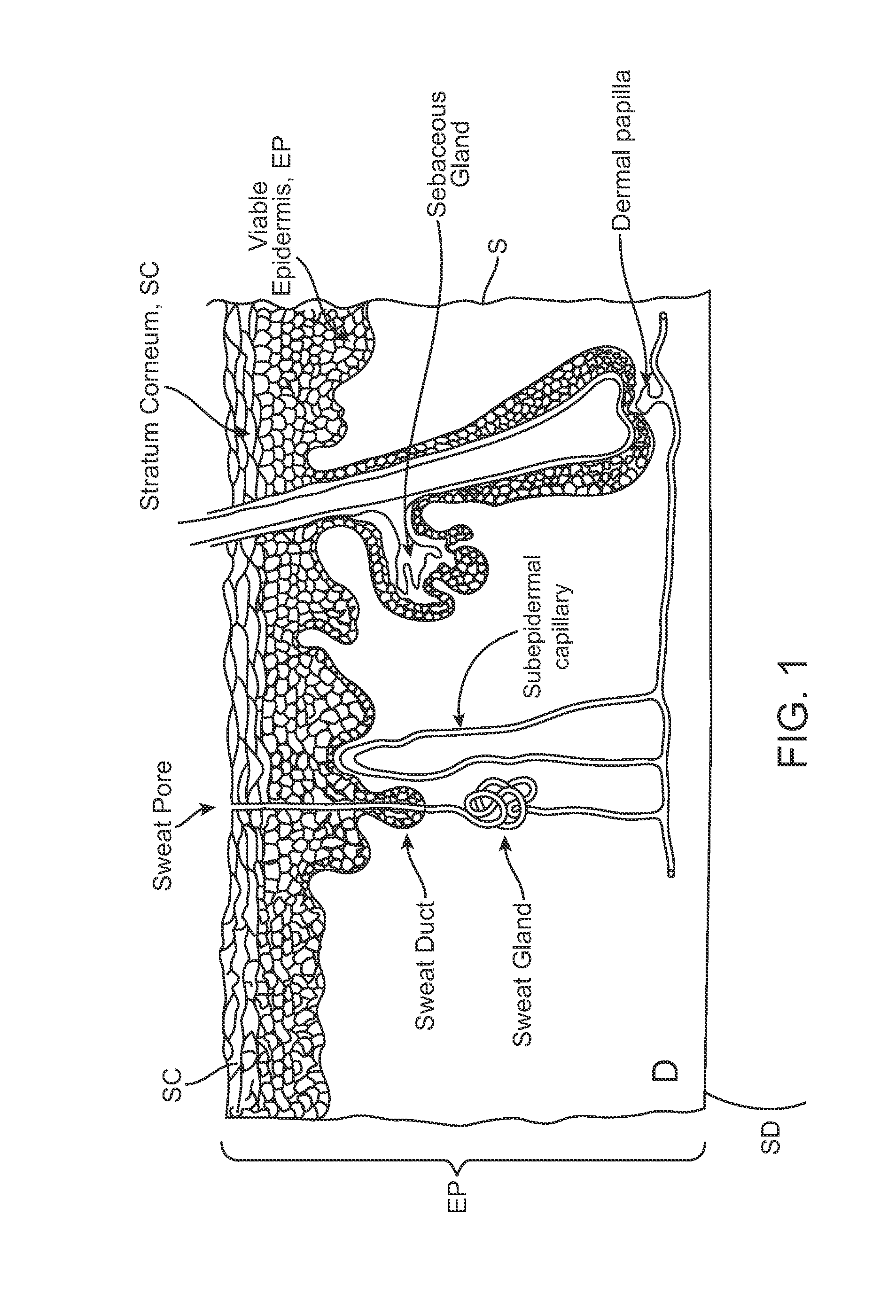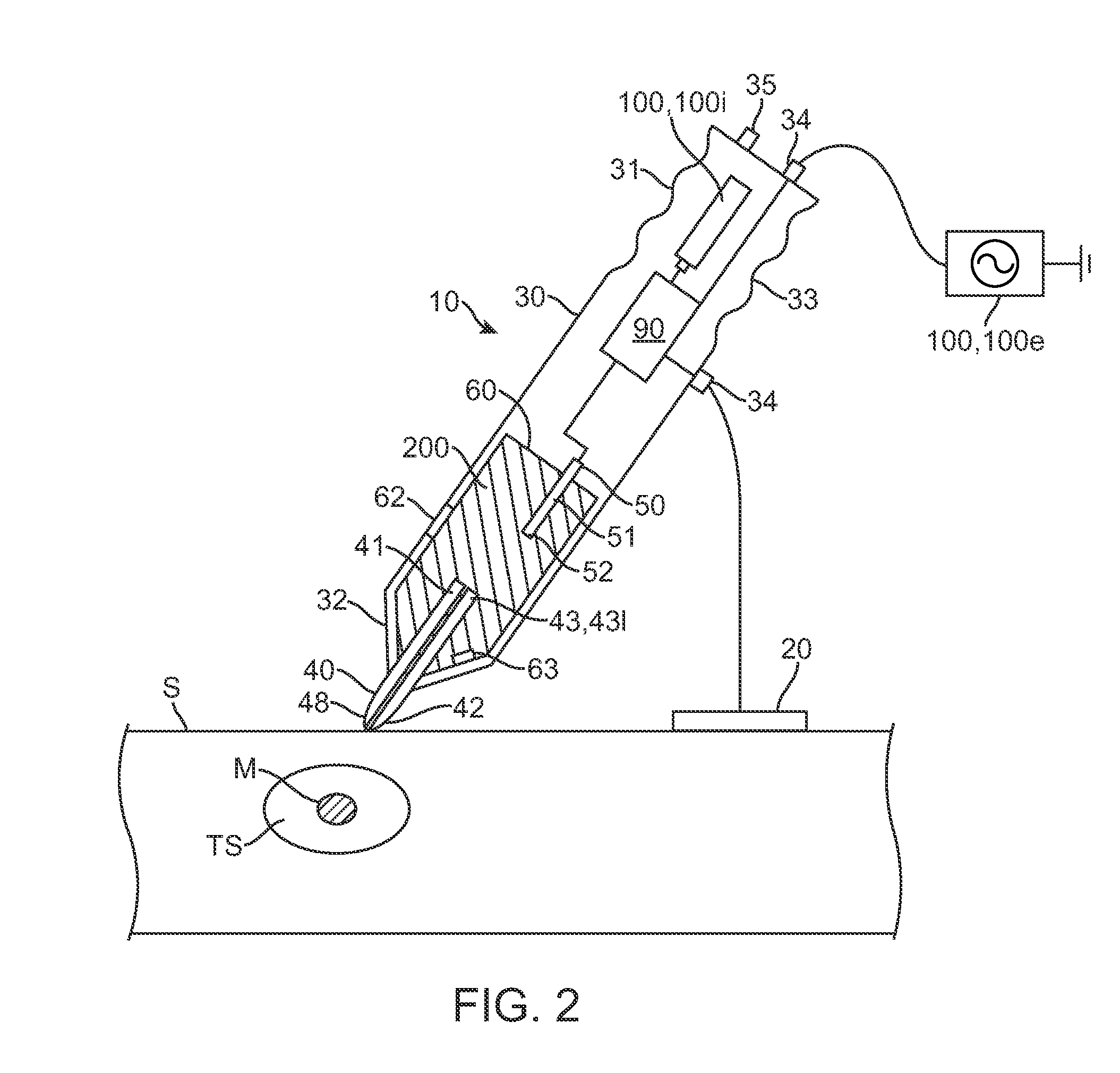Iontophoretic apparatus and method for marking of the skin
a technology of iontophoretic apparatus and skin, which is applied in the field of intradermal iontophoretic delivery of colorants for producing skin markings, can solve the problems of many of the dyes currently used, pain in needle use, fade, etc., and achieve the effect of reducing the pain perception of a person, and reducing the likelihood of human error
- Summary
- Abstract
- Description
- Claims
- Application Information
AI Technical Summary
Benefits of technology
Problems solved by technology
Method used
Image
Examples
Embodiment Construction
[0020]Many embodiments described herein provide a system and method for intradermal iontophoretic delivery of colorants to produce markings in the skin. A brief explanation will be provided for these terms as well as the anatomy of the skin. Referring now to FIG. 1, the layers of the skin include the epidermis EP, dermis D and subdermis SD. The upper most layer of the epidermis includes the stratum corneum SC a dead layer of skin (having a thickness of about 10 to 40 μm) and the viable epidermis EP. The term intradermal refers to the delivery of a substance such as a colorant into the skin S including one or both of the epidermal E and dermal D layers.
[0021]Iontophoresis is a non-invasive method of propelling high concentrations of a charged substance, known as the active agent, into or through the skin by repulsive electromotive force using a small electrical charge. The charge is applied by an electrical power source to an active electrode assembly placed on the skin which contain...
PUM
 Login to View More
Login to View More Abstract
Description
Claims
Application Information
 Login to View More
Login to View More - R&D
- Intellectual Property
- Life Sciences
- Materials
- Tech Scout
- Unparalleled Data Quality
- Higher Quality Content
- 60% Fewer Hallucinations
Browse by: Latest US Patents, China's latest patents, Technical Efficacy Thesaurus, Application Domain, Technology Topic, Popular Technical Reports.
© 2025 PatSnap. All rights reserved.Legal|Privacy policy|Modern Slavery Act Transparency Statement|Sitemap|About US| Contact US: help@patsnap.com



